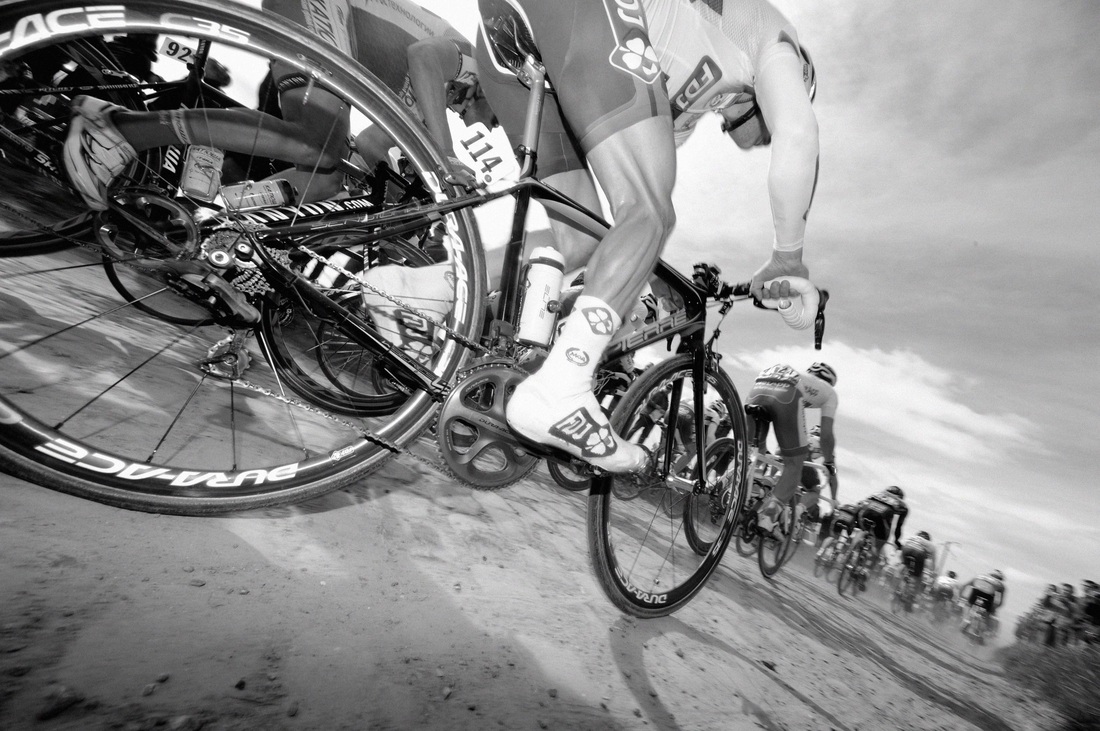|
When I took the buyout from the New York Times last December, a few people asked if there was anything I regretted not doing.
I had to pause. I could think of a few legendary college football stadiums, a few arenas or ballparks, some great soccer stadiums in Latin America and Europe. But events? Then something popped into my mind: Paris-Roubaix. http://www.bicycling.com/news/pro-cycling/tom-boonen-powers-fourth-paris-roubaix-victory-equals-record If there was one unique sports event I had never covered, one exotic specialty I had not witnessed in person, it was the trek from outside Paris to the cycling-mad town near the Belgian border. The chief attraction is the roadway itself – multiple sections of cobblestones put in place during the Napoleonic Era, state of the art then, torture to human and machine nowadays. I have grown to love cycling, covering the last tumultuous years of Lance Armstrong’s reign. Some of my best days were spent in a car with Sam Abt, the Times’ long-time cycling correspondent, and James Startt, photojournalist and cyclist and musician based in Paris. James would drive, and Sam would smoke, and they would bicker over whether the CD would blare reggae (James) or punk rock (Sam, go figure). James is still plying his trade, as anybody can tell from clicking on Bicycling.com. He recently found one of the most obscure winners of the Tour, Roger Walkowiak of France, whose stunning upset in 1956 annoyed the French fans because (a) he had a Polish name and (b) he was not a favorite and (c) he employed tactics like preserving his strength by riding in the pack on key stages. No panache. Walkowiak made very little money from cycling but used it to buy a sheep farm in southwest France, and has remained mostly incognito ever since. Somehow, Startt cajoled Walkowiak into granting an interview that casts a deep look into the history and mentality of this fascinating sport. You can access it: http://www.bicycling.com/news/featured-stories/lamentation I was hoping my friend Startt, a former American cycling hopeful, would get to ride the Paris-Roubaix course ahead of the big race on Easter Sunday, but it didn’t work out. Instead, he and his camera were there when the cyclists arrived in the bustling oval in Roubaix. Also, the new NBC sports channel carried the last two hours of Paris-Roubaix, live, with the same phalanx of planes, motorcycles and cars used in the Tour, plus good old Liggett and Sherwen doing the commentary. I could sit in my living room and watch the best cyclists in the world try to avoid being maimed by the cobblestones of Flanders. That epic, singular race was described last week by John Leicester, the Associated Press European sports columnist. I won’t even try to go over his superb description and reporting: http://sports.yahoo.com/sc/news?slug=ap-johnleicester-060412 The sections are called pavés. I had seen them up close during one stage of the 2004 Tour de France, which meandered from Liege through the killing fields of World War One, and into France. I remember watching the team trial go past on a rainy, windy day, hardened Tour cyclists quivering from repeated shocks to spines and central nervous systems from hitting one 18th Century cobblestone after another. The cameras were so close you could see the reinforced bicyles shimmy and shake. It hurt to watch. The weather Sunday was cool and damp. People were bundled up along the narrow lanes, waving at the cyclists from inches away.(Why are there not more accidents?) I saw quaint villages and the green fields of Flanders in early spring. I was comfortable in my house, but could sniff the coffee and the frites. I would have loved to be transported to chilly Roubaix, listening to survivors grouse and marvel at this cruel test. I could only adapt the Passover saying: instead of Next Year in Jerusalem, I said, Next Year in Roubaix. It’s a thought. 11/11/2013 08:20:13 am
I would be very thankful if you continue with quality what you are serving right now with your blog...I really enjoyed it...and i really appreciate to you for this....its always pleasure to read so....Thanks for sharing!!!
Shawn
4/10/2012 01:29:25 pm
Given the Time's minimal coverage of cycling after Lance, would they have sent you (or anyone else) to cover races? They don't even cover bigger races in the US like the Tour of California.
ThatGuy
4/10/2012 03:36:13 pm
I think the one place to see this race in person would be at the gates of the Arenburg Forest, then retire to a nearby bar to watch the rest on TV. The NBC Sports Network coverage only showed that in the re-air, but it was still thrilling to see.
George Vecsey
4/11/2012 12:25:30 am
Thanks for the comments. Having retired -- writing a couple a month now as "contributor" -- I am viewing this from distance. I'm mostly glad not to be making plans to travel. But watching cycling on the tube makes my love of the sport kick in. Same as for soccer. Thanks for the tips about Flanders and the Arenburg Forest. I have such great memories of that region and Belgium from the 2004 Tour. Maybe it was the Belgian frites in a bag, in the car! GV 7/23/2012 08:48:15 pm
Your post is really good providing good information.. I liked it and enjoyed reading it.Keep sharing such important posts. 8/8/2012 08:09:38 pm
I am glade to read this, Thank you so much for providing individuals with such a breathtaking opportunity to read from this blog. It is always very enjoyable
Mattie
12/28/2013 09:05:35 am
I am glad to see that people are actually writing about this issue in such a smart way, showing us all different sides to it. Please keep it up. online-essay-writer.org I cant wait to read whats next.
David Bender
11/6/2017 08:59:15 am
Hi Editor, Comments are closed.
|
Categories
All
|










